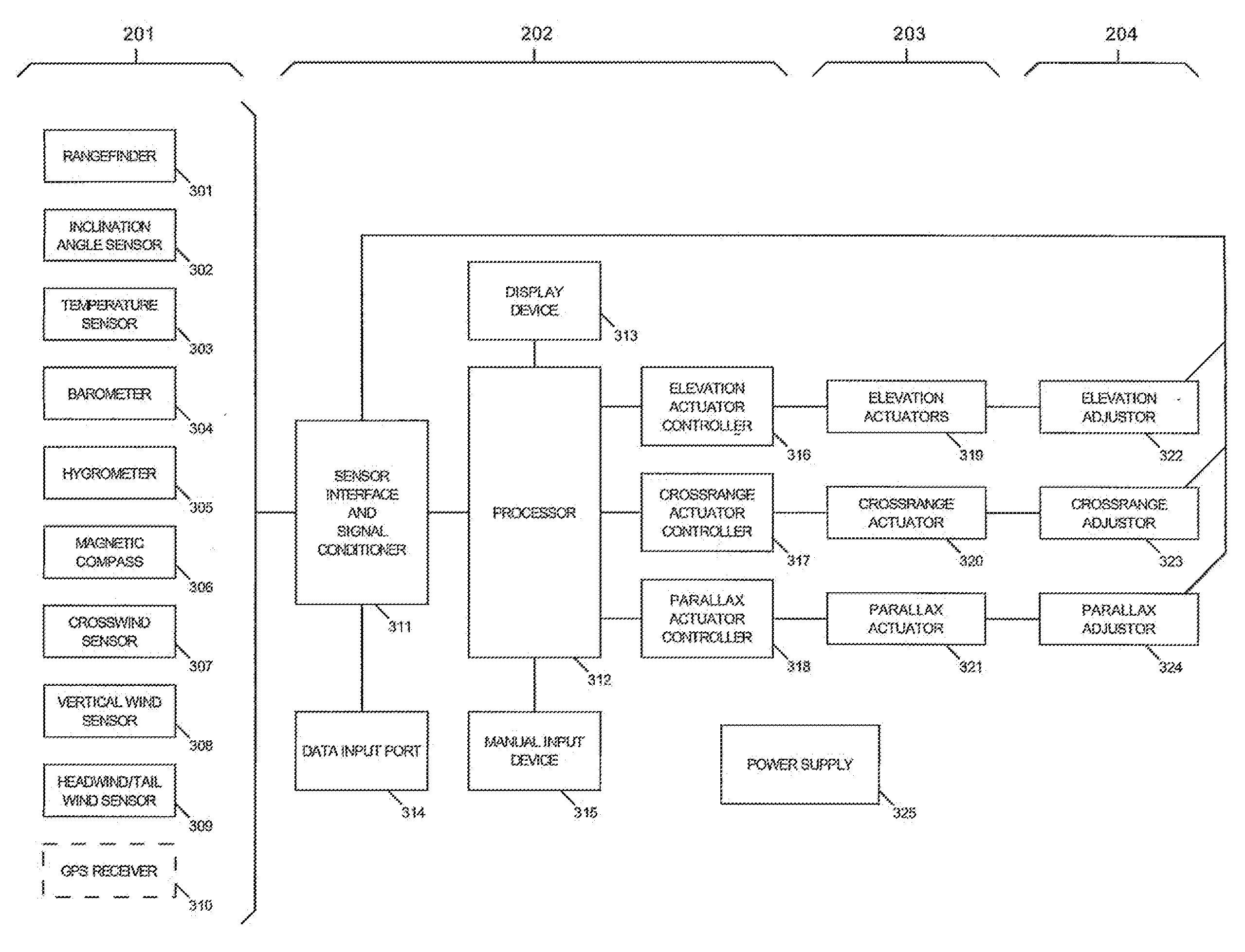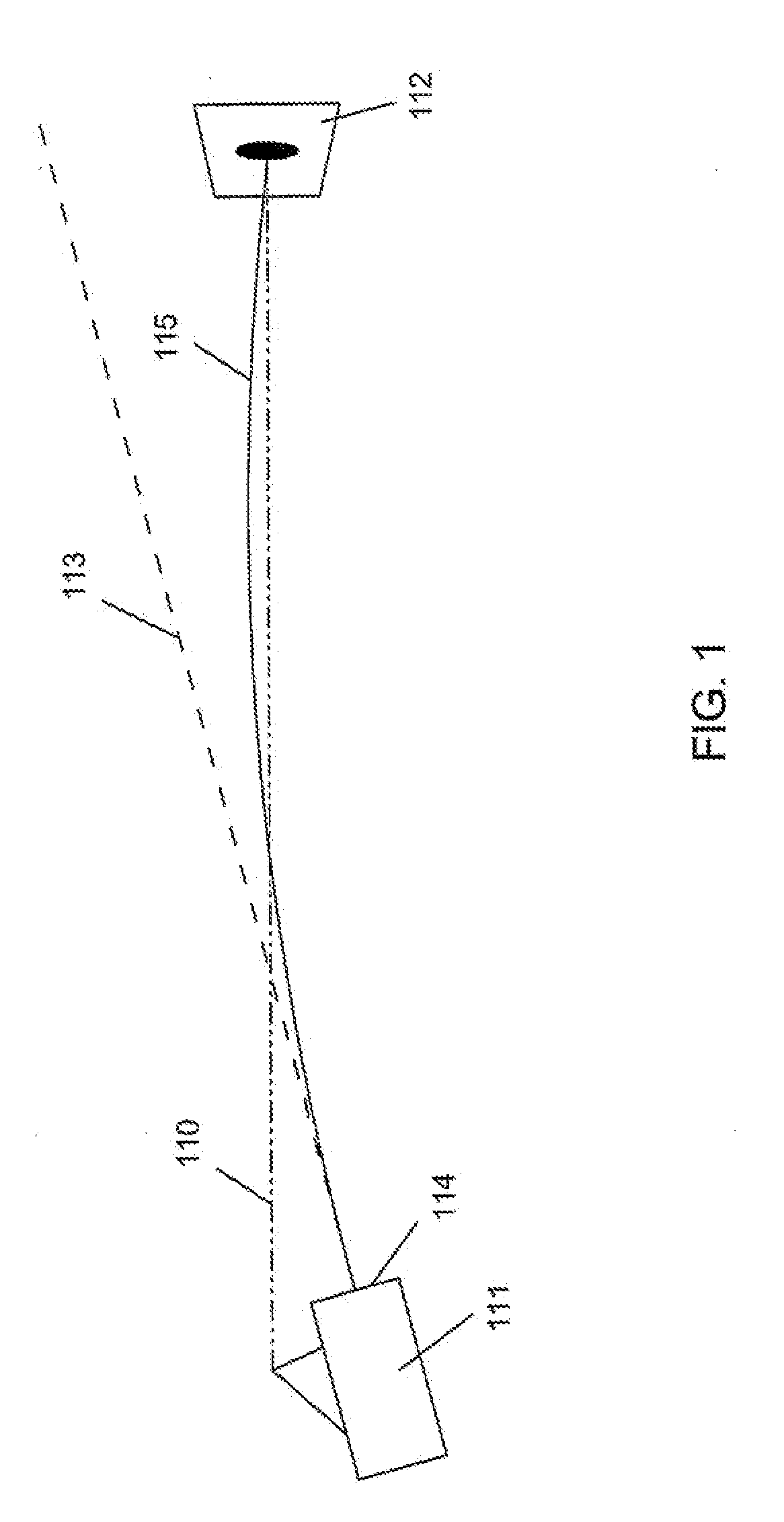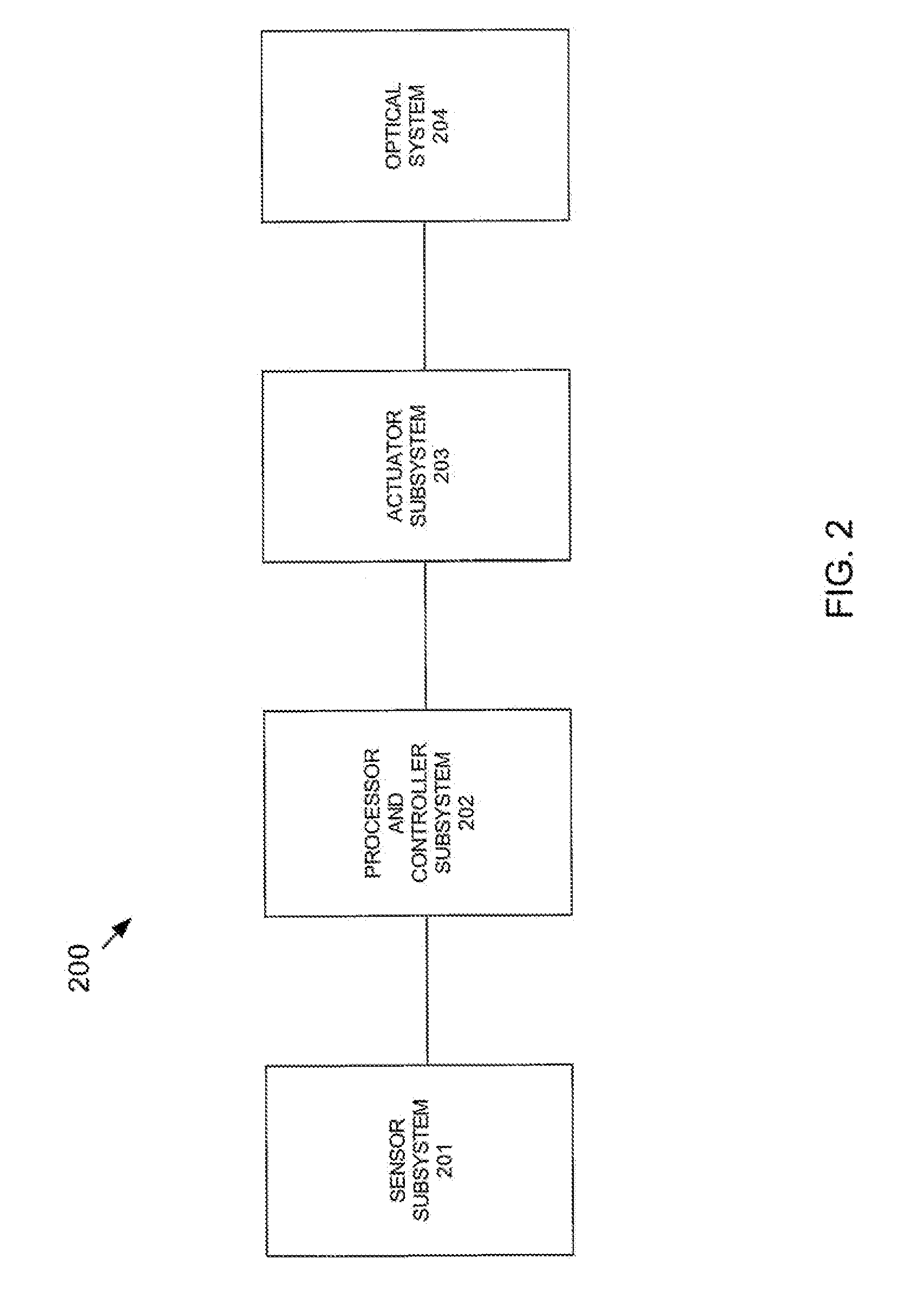Optical Sighting System
a sighting system and optical technology, applied in the direction of mechanical control devices, instruments, process and machine control, etc., can solve the problems of difficult task, limited sighting system for civilian, law enforcement, military firearms used for adjusting the orientation of firearms, and difficulty in selecting a proper firing position
- Summary
- Abstract
- Description
- Claims
- Application Information
AI Technical Summary
Benefits of technology
Problems solved by technology
Method used
Image
Examples
Embodiment Construction
[0044]The present inventive concept provides an automatic optical sighting system (AOSS). When used with a firearm, the AOSS of the present inventive concept automatically performs one or more aiming adjustments, thereby eliminating the need for a marksman to estimate the effects of, for example, range to the target, ambient weather conditions, direction of the target from the firearm, inclination angle of fire, and projectile characteristics. Additionally, exemplary embodiments of the present inventive concept provide automatic aiming adjustments that are necessary for compensating for one or more secondary effects that may affect accuracy of projectile impact at range distances in excess of about 800 meters, as well as accuracy of projectile impact for smaller targets at closer range distances. The exemplary embodiments of the present inventive concept also allow a manual override of one or more adjusters that adjust, for example, elevation, windage, or parallax, in the event of a...
PUM
| Property | Measurement | Unit |
|---|---|---|
| range distances | aaaaa | aaaaa |
| distances | aaaaa | aaaaa |
| trajectory | aaaaa | aaaaa |
Abstract
Description
Claims
Application Information
 Login to View More
Login to View More - R&D
- Intellectual Property
- Life Sciences
- Materials
- Tech Scout
- Unparalleled Data Quality
- Higher Quality Content
- 60% Fewer Hallucinations
Browse by: Latest US Patents, China's latest patents, Technical Efficacy Thesaurus, Application Domain, Technology Topic, Popular Technical Reports.
© 2025 PatSnap. All rights reserved.Legal|Privacy policy|Modern Slavery Act Transparency Statement|Sitemap|About US| Contact US: help@patsnap.com



